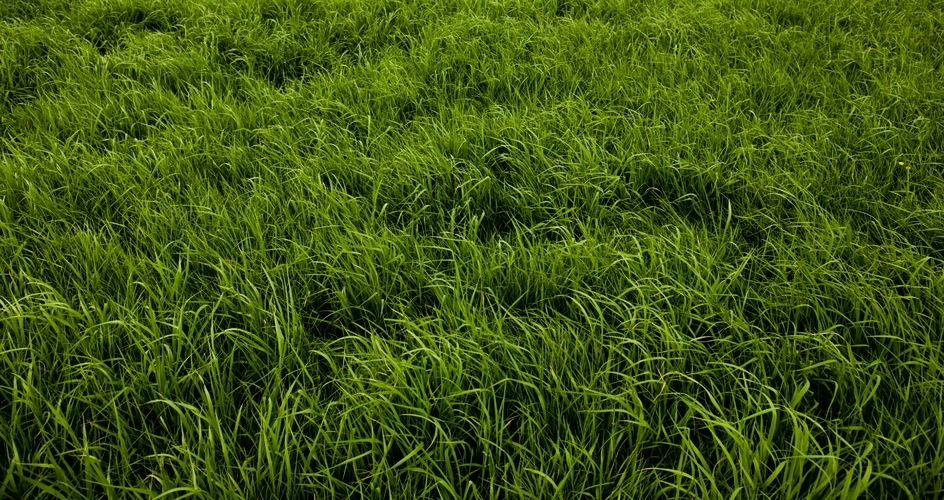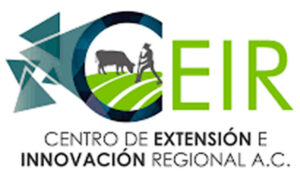Advances in Dairy Research
Miguel Ángel Galina1*, Jorge Pineda2, Rosa Isabel Higuera Piedrahita1, Pedro Vázquez3, George Haenlein4, Jorge Olmos5, Young W. Park6

1Faculty of Higher Studies, Cuautitlán, National Autonomous University of Mexico, Mexico; 2Faculty of Veterinary Medicine and Zootechnics, Universidad de Colima, Mexico; 3Center for Research in Applied Science and Advanced Technology National Polytechnic Institute, Querétaro, Mexico; 4Department of Animal & Food Sciences, University of Delaware, Newark-Delaware, USA; 5Faculty of Veterinary Medicine and Zootechnics Universidad Autónoma de Querétaro, Querétaro, Mexico; 6Georgia Small Ruminant Research & Extension Center, Fort Valley State University, Fort Valley, Georgia, USA
ABSTRACT
The objective of this study was to compare the fatty acid profile of caprine milk or cheese from animals raised under extensive, semi-extensive or full confinement production system in México. Feeding systems particularly grazing have been shown to affect essential fatty acid profiles, particularly the ω6/ω3 balance. Utilization of concentrates probably raises the omega 6 contents, or decreases omega 3 concentration, often exceeding 4:1 ω6/ω3 ratio, diminishing beneficial effects of ω3 regarding consumer health. The present study was conducted for two years (2016 and 2017) on 5,079 lactating goats from the states of Querétaro, Guanajuato, Colima, San Luis Potosí and Michoacán in México. Average milk production was 1.5/d liters (DS ± 0.9). Of the 98 farms studied, 35% were in full confinement, feeding basically alfalfa hay and concentrate (18% CP), 22% grazed rye grass, 17% pastured alfalfa (45% of these grazing systems were supplemented), finally 26% grazed were in silvopastoral surroundings, mainly without supplement. The use of concentrate in more than 35% of total feed consumption had an effect on the profile of essential fatty acids exceeding ω6/ω3 4/1 ratio. In 36 of the studied farms levels of ω6/ω3 exceeded 4:1, all of them were supplemented with 700 g /d or more concentrate. In those units the use of the supplement decreased ω3 or increased ω6. Keywords: Goat milk cheese; Indoor feeding; Grazing; Poly-Unsaturated Fatty Acids (PUFA); Omega fatty acids.
INTRODUCTION In recent years, the consumers’ demand for high quality food in relation to its nutritional value and sensory characteristics has increased [1]. Animal diets can affect the quality of farm animal products [2]. It has been documented that pasture-grazed sheep and goats provide healthier milk by enhancing its composition in the desirable bioactive fatty acids, CLA cis-9, trans-11, n-3 fatty acids [3] and in volatile aromatic compounds such as terpenes [4]. Previous studies demonstrated the fatty acid composition of the milk used for the production of dairy products, affects directly their quality characteristics and subsequent consumer acceptance [5]. The two major systems of goat farming are pasture and indoor systems. Between these two managements there are wide scopes of mixed systems such as summer pasture/winter indoors or alternatively indoors/outdoors, subject to climatic differences or forages viability [6]. People consider more often pasture systems as more extensive than indoor systems [7]. However, level of intensification varies in grazing systems based on cultivated pasture versus goats fed on poor rangelands [8]. The intensification level in indoor systems is tightly linked with the nutritive value of fodders, as well as the quantity of distributed concentrates [4]. As previously discussed despite the difficulties due to the multiple types of systems, we can compare results in regards of indoor versus outdoor farming systems [4]. At present there is a growing interest in animal food products obtained from grazing and is recognized by nearly all consumers and farmers themselves as high-quality foods [9]. Dairy specialization has brought about an increase in the use of concentrates [10], thus reducing or even eliminating pasture as a feed source. Despite the goat farming intensification process, there are still areas where farms depend on pastures at least partially, to feed their animals. However, for this production model to be sustainable, apart from being economically viable, the quality of their products should also be analyzed and characterized to increase market value [11]. Recently it has been proven in the literature that a lower content of Saturated Fatty Acids (SFA) favors human health, due to its role in different diseases [12]. The effect of the presence of ω´s 3, metabolized by elongation of conjugated linoleic acid (ACL), particularly the role of arachidonic acid and Docosa Hexaenoic Acid (DHA) in the reduction of oxidative stress due to the presence of reactive oxygen substances, which is characterized by a decrease in the capacity of the endogenous system to act against oxidative attack directed to biomolecules, associated with different severe pathologies, such as cancer, cardiovascular diseases, type 2 diabetes, hypertension, and neurodegenerative diseases has been well documented [12]. In México previous studies have demonstrated the importance of grazing in the quality of goat milk, particularly oxidative compounds and phenols [9,13]. These investigations reported a total range of phenols from 780 mg/l in milk of the goats that graze against 50 mg/l to milk from full confinement, and also discussing pasteurization that could diminish almost half those contents [9]. Pasturing has been very significant. The phenols range from a minimum of 49 mg up to a maximum of 150 mg, which is sufficient to justify the influence of phenols on taste [6]. Cabiddu [2] report that total phenols exceeded 67 mg/l in milk from goats fed indoors, compared to 469 mg/l if the goats were pasturing. Chavez Servin [9] in semi-arid Mexico have found that pasteurization of milk decreased phenol contents and that grazing, compared to the full confinement system, caused a significant increase in phenol content. Fatty acid, volatile and sensory profiles from milk and cheese raised on native semiarid pasture or confinement have demonstrated significant differences also in Brazil [14]. Several previous studies on the nutritional quality of milk in Mexico demonstrated benefits of grazing in cows, goats and sheep [15]. A low content of Saturated Fatty Acids (SFA) and high in Poly-Unsaturated Fatty Acids (PUFA) was observed in milk from grazing animals, contrasted with a significantly higher presence of SFA and lower PUFA in milk from animals in full confinement [9,15]. Food, in general, and in particular free grazing in a silvopastoral environment, allows each goat as an individual, to compose a diet according to their own needs, which have a positive effect on the nutritional characteristics of milk [15,16]. It has been demonstrated that milk from grazing livestock could have a positive impact on human health, producing milk or cheese of better nutritional quality for the consumer, due to the balanced presence of ω6/ ω3 [17]. Previous work demonstrated the importance of ω6/ω3 relationship Simopoulos [18,19] suggesting a 4:1 ratio to prevent cardiovascular diseases with a 70% reduction in mortality. Recently the importance of maintaining a ratio of ω6/ω3 not higher than 4:1 was documented and in modern diets the contribution of ω3 decreased and the consumption of ω6 has increased to levels higher than 10:1 [20,21]. The Poly-Unsaturated Fatty Acids (PUFA) consumed in the diet is absorbed by the intestinal cells and subsequently give rise to several metabolites. On the one hand, by elongation and desaturation, PUFAs are transformed into long chain PUFAS. By retroconversion, the number of carbon in the chain is increased by 2 in derivatives of linoleic acid (AL) and conjugated linoleic acid (ACL). On the other hand, cyclooxygenases and lipoxygenases generate different protonoids of Eicosa Pentaenoic Acid (EPA), Arachidonic Acid (AA) and Docosahexaenoic Acid (DHA) in the formation of Prosta Glandins (PG), Leukotrienes (LT) and Thrombokinase (TX), all of them involved in anti-oxidation and anti-inflammatory processes, which prevent coronary heart disease, hypertension, diabetes, arthritis and cancer, in addition to their role in the control of other inflammations and autoimmune conditions [20]. Goats adapt well to environmental conditions in semiarid lands, being able to obtain adequate diets, even when forage are scarce and they can feed over rough, and otherwise inaccessible terrain. Mexican range land is dominated by different vegetation species, which usually contain metabolites with certain benefits for human health, including alkaloids, glycosides, fatty acids, terpenes, phenols, saponins, tannins, and flavonoids [8,13,15,16]. The vegetation, consumed by goats during grazing, changes its chemical and nutritive composition seasonally, which gives cheese a different nutritive profile and flavor through the year [22,23]. Components with nutritional and beneficial health interest were found in higher concentrations in cheese made from grazing, compared to an indoor feeding system, regardless of animal species [7,8,24]. Nevertheless very few studies have detailed the nutritional qualities of grazing goat’s cheese with or without temperature treatment over a length of time [16]. Goats grazing on semi-arid brush land had more than twenty different eatable plants [25]. Beneficial vegetation metabolites to human health found in milk, has also been reported from analyses of different cheeses, including amines and alkaloids, cyanogenic glycosides, cyclitols, fatty acids, fluoroacetate, gums, non-protein amino acids, terpenes, tannins, and flavonoids [13,26]. In Mexico, there has been a long tradition of livestock grazing due to extensive pastoral areas [27]. Cheese and milk products from grazing animals have become known for their superior taste and quality compared to dairy products from indoor fed animals, cattle or goats [8,16]. This knowledge could help the economical and sociological development of small farm enterprises. Utilization of fibrous diets, roughages and brush land through grazing by ruminants can be manipulated in various ways. The use of the local resources provides economic feasibility to the dairy goat industry [8]. Recent work discussed the quality of sheep’s cheeses manufactured from grazing or indoor animals [16]. However, it is not well known whether this pastoral system affects cheese composition in different grazing systems. Therefore, the present study compares the effect of grazing and supplementation as compared to indoor feeding with alfalfa hay and concentrate, on the nutritional composition of artisan goat’s cheeses, made from raw or pasteurized milk. The objective of this study was to evaluate the effect of grazing on the presence of essential fatty acids (PUFA) and the balance of ω6/ ω3 of grazing animals in 99 goat herds in Mexico during 2 years.
